Rehabilitation of acquired brain injury (ABI) has experienced remarkable advances in recent years thanks to the development of new neurorehabilitation technologies and advances in medicine and neuropsychology, which aim to maximize functional recovery and improve the quality of life of those who suffer brain injuries. This article explores the main trends in the treatment of acquired brain injury that are leading the field of neurorehabilitation today.
What is acquired brain injury (ABI)?
The acquired brain injury (ABI) refers to any injury to the brain that occurs after birth, excluding degenerative or hereditary causes. Among its most common causes are stroke (CVA), traumatic brain injury (TBI), anoxia, and encephalitis. In addition, ABI symptoms vary widely, affecting functions such as memory, language, motor skills, and behavior.

Subscribe
to our
Newsletter
Main trends in neurorehabilitation of acquired brain injury (ABI)
1. Neuroplasticity therapies in acquired brain injury (ABI)
Neuroplasticity, known as the brain’s ability to reorganize and form new neural connections, is a key pillar in the rehabilitation of acquired brain injury and a central element in current treatments.
What are neuroplasticity therapies?
Neuroplasticity therapies aim to stimulate brain areas that have lost function due to injury, promoting other regions of the brain to acquire new functions and compensate for that deficit.
These therapies are particularly effective in the early stages of rehabilitation and can include techniques such as repetitive training, cognitive exercises, and technologies like virtual reality (VR) and transcranial stimulation.
Key factors in neuroplasticity therapies for acquired brain injury (ABI)
- Intensity and repetition: Repetition of specific tasks and intensive practice are fundamental to promote neuroplasticity. Rehabilitation sessions should be frequent and well structured.
- Personalization: Each person presents a unique profile, so tailoring and adjusting interventions to their individual needs is essential to maximize the effectiveness of cognitive rehabilitation interventions.
- Motivation of affected individuals: Maintaining a high level of motivation through dynamic and engaging approaches, such as the use of therapeutic games and virtual reality environments, is crucial for the success of therapies.
- Constant feedback: Providing continuous feedback on each person’s progress helps adjust strategies and foster engagement with the rehabilitation process.
Benefits of neuroplasticity therapies in acquired brain injury (ABI)
Neuroplasticity therapies offer a number of significant benefits:
- Functional improvement: People with brain injuries can experience notable recovery in motor and cognitive skills, enabling them to resume daily activities.
- Adaptation to changes and quality of life: Neuroplasticity helps people with this condition adapt to the sequelae of acquired brain injury, making it easier to learn new strategies to manage their limitations. By rehabilitating lost functions, these individuals tend to experience improvements in emotional well-being and overall quality of life.
- Reduced risk of dependence: By improving functionality, the risk that these individuals become dependent on others for everyday activities is decreased.
Technology-based therapies: virtual reality (VR) and augmented reality (AR) in acquired brain injury (ABI)
Technology-based therapies, especially virtual reality (VR) and augmented reality (AR), have become revolutionary tools for the treatment of acquired brain injury (ABI) by optimizing clinical outcomes and improving the experience of people with brain injuries.
What are virtual reality and augmented reality therapies?
Virtual reality and augmented reality therapies involve the use of immersive digital environments and interactive elements to facilitate rehabilitation. Virtual reality immerses individuals in a simulated environment where they can practice motor and cognitive skills, while augmented reality overlays digital elements onto the real environment, allowing exercises to be performed in familiar contexts.
Key factors in technology-based therapies for ABI
- Personalization: The ability to adapt virtual reality (VR) and augmented reality (AR) programs to the individual needs of each person is essential to ensure that interventions are relevant and effective.
- Interaction and engagement: The interactive nature of these technologies fosters greater engagement and adherence to treatment and more active participation by people with brain injuries.
- Immediate feedback: Real-time data collection provides therapists with valuable information about each person’s progress and facilitates quick adjustments to treatment.
- Accessibility: The growing availability of VR and AR devices and applications has made these technologies more accessible, favoring their implementation in neurorehabilitation centers.
Benefits of using virtual reality and augmented reality in acquired brain injury (ABI)
Technology-based therapies offer multiple benefits:
- Cognitive stimulation: Virtual reality (VR) and augmented reality (AR) can be designed to work on key specific skills such as attention, memory, and problem solving, which are central to cognitive rehabilitation.
- Functional recovery: These therapies allow the practice of movements in a safe environment, promoting the recovery of motor skills and facilitating the learning of new strategies.
- Increased motivation: Gamification and the use of virtual environments make therapy sessions more engaging, motivating people with brain injury to participate actively and regularly.
- Accurate assessment: Technology enables objective evaluations of each person’s progress, facilitating monitoring of rehabilitation and adaptation.
3. Multidisciplinary approaches in acquired brain injury (ABI)
In addition to the above, multidisciplinary approaches have established themselves as a key trend in the treatment of acquired brain injury (ABI).
What are multidisciplinary approaches?
Today, the treatment of ABI benefits from collaboration among neurorehabilitation professionals, such as neurologists, neuropsychologists, and occupational therapists, to carry out a comprehensive approach to brain injuries, from cognitive deficits to mobility problems and emotional challenges.
Key factors in implementing multidisciplinary approaches in acquired brain injury (ABI)
- Communication: Coordination among team members is crucial to achieve a coherent and cohesive approach.
- Comprehensive assessment: Each specialist contributes their perspective and knowledge, allowing for a thorough evaluation of the abilities and limitations of individuals with brain injuries and addressing all affected areas.
- Personalized planning: Collaboration allows designing a treatment plan that adapts to the individual needs of each person, ensuring that all areas of their recovery are considered.
- Continuous training: Ongoing education and updating of team members on best practices and new research in ABI are essential to maintain an effective approach.
Benefits of the multidisciplinary approach in neurorehabilitation of acquired brain injury (ABI)
Multidisciplinary approaches offer a number of significant benefits for people with ABI:
- Improved recovery: By addressing the different dimensions of ABI, individuals with brain injuries experience a more complete and functional recovery.
- Comprehensive care: This model allows treating not only the physical symptoms but also the emotional and cognitive aspects of each person affected by brain injuries.
- Increased adherence to treatment: Holistic care and personalized treatment tend to increase motivation and adherence of affected individuals to therapies.
- Reduced family burden: A coordinated approach can help educate and empower families, reducing pressure on them and improving the support environment for these individuals.
4. Non-invasive brain stimulation (NIBS): transcranial magnetic stimulation (TMS) and transcranial direct current stimulation (tDCS) in acquired brain injury (ABI)
Non-invasive brain stimulation is one of the most innovative trends in brain injury rehabilitation.
What is non-invasive brain stimulation (NIBS)?
Non-invasive brain stimulation (NIBS) includes techniques such as transcranial magnetic stimulation (TMS) and transcranial direct current stimulation (tDCS). These methodologies allow modulation of neuronal activity without the need for surgical procedures. By applying mild electrical currents or magnetic fields to the scalp, the goal is to influence cortical excitability and promote neuroplasticity, thereby facilitating the recovery of lost skills.
Key factors of non-invasive stimulation (NIBS) in acquired brain injury (ABI)
- Personalization of treatment: It is crucial to adapt the intensity, duration, and location of stimulation according to the specific needs of each person to ensure an individualized approach.
- Integration with other therapies: Combining NIBS with physical and cognitive therapies enhances results by addressing different aspects of rehabilitation simultaneously.
- Monitoring and assessment: Monitoring each person’s progress through periodic evaluations is fundamental to adjust treatment and maximize benefits.
- Staff training: Professionals applying these techniques must be adequately trained to ensure their effectiveness and safety, as well as to properly evaluate results.
Benefits of non-invasive stimulation (NIBS) in acquired brain injury (ABI)
Non-invasive brain stimulation offers multiple benefits for people with ABI:
- Improved functional recovery: Research shows that these techniques can accelerate the rehabilitation of motor and cognitive skills, allowing people with brain injuries to reintegrate more quickly into their daily activities.
- Increased neuroplasticity: By stimulating the brain, the creation of new neural connections crucial for recovery after injury is encouraged.
- Low risk of side effects: Being non-invasive, these techniques have a favorable safety profile compared to more invasive treatments.
- Increased motivation: The inclusion of these innovative techniques can result in greater adherence of each person to rehabilitation by offering a more interactive and effective experience.
Conclusion
| Neuroplasticity therapies | Technology-based therapies: VR and AR | Multidisciplinary approaches | Non-invasive brain stimulation (NIBS) | |
| Functional improvement | X | X | X | X |
| Adaptation to changes and quality of life | X | |||
| Reduced risk of dependence | X | X | ||
| Cognitive stimulation | X | |||
| Increased motivation | X | X | ||
| Accurate assessment | X | |||
| Comprehensive care | X | |||
| Increased treatment adherence | X | |||
| Increased neuroplasticity | X | |||
| Low risk of side effects | X |
Current trends in the treatment of acquired brain injury focus on neuroplasticity, technology, multidisciplinary approaches, and non-invasive brain stimulation (NIBS). As research and technology advance, ABI treatments will continue to improve and offer renewed hope to individuals with brain injuries and their families. Implementing these therapies in rehabilitation programs may be the key to achieving more effective and faster results in functional recovery and quality of life for people with acquired brain injury (ABI).
If you liked this blog post about the current trends in the treatment of acquired brain injury (ABI), you may be interested in these NeuronUP articles:
“This article has been translated. Link to the original article in Spanish:”
Tendencias actuales en el tratamiento de daño cerebral adquirido (DCA)
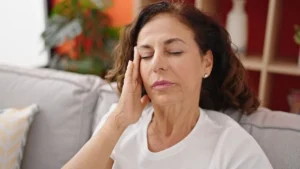
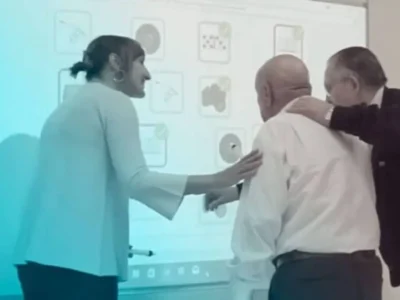
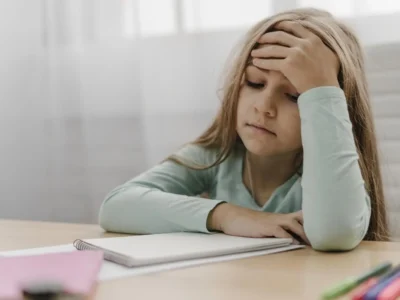
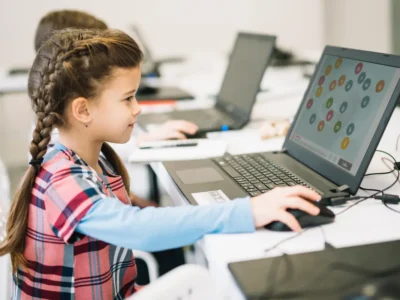


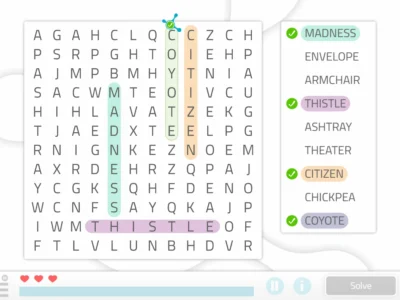
 Journey through Neurorehabilitation: NeuronUP’s Advent Calendar
Journey through Neurorehabilitation: NeuronUP’s Advent Calendar
Leave a Reply